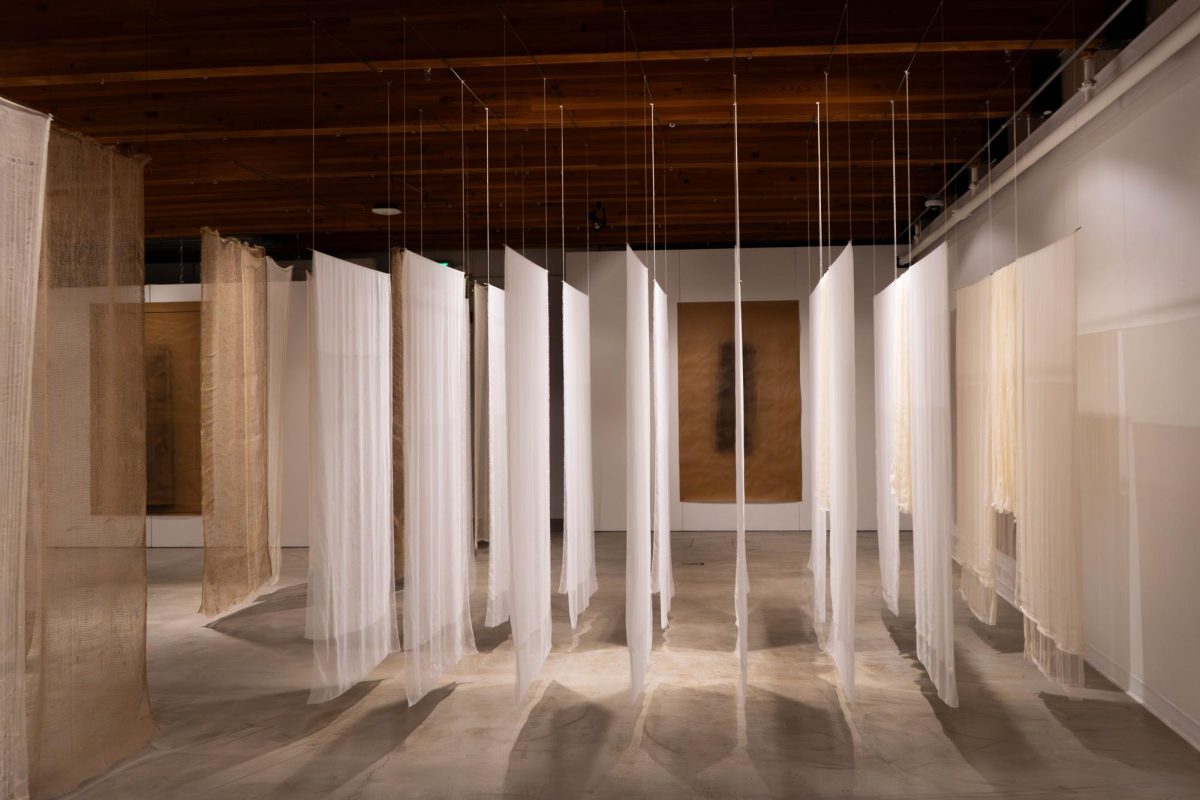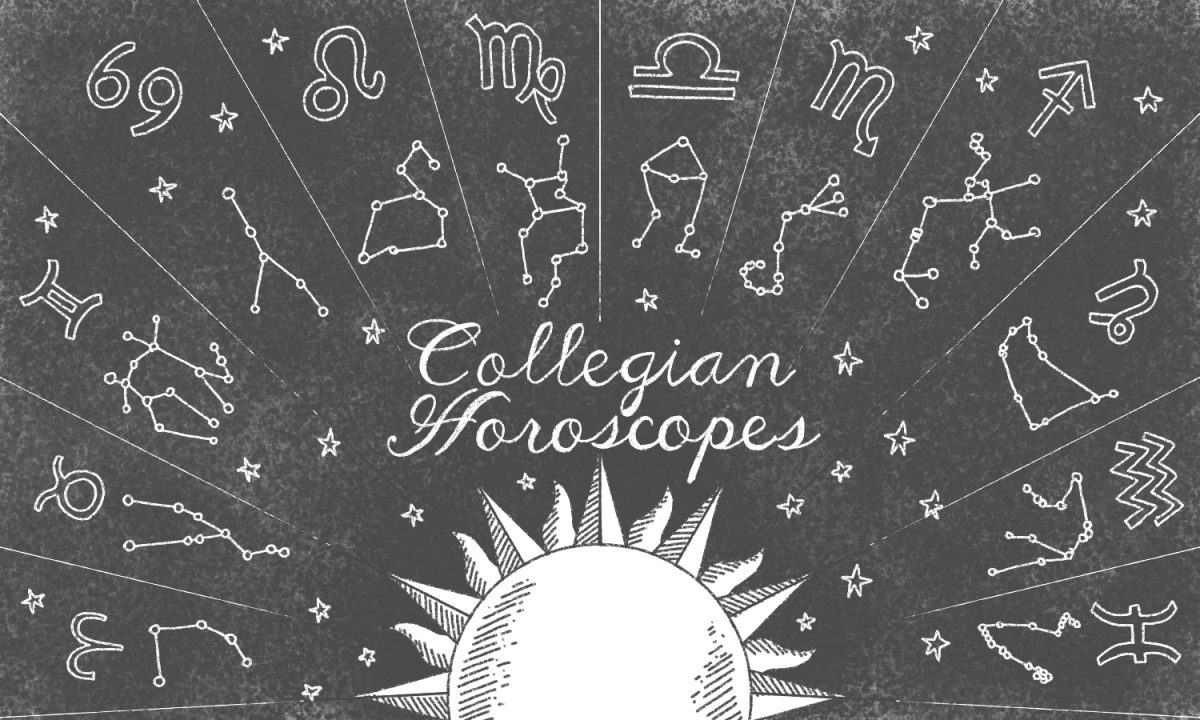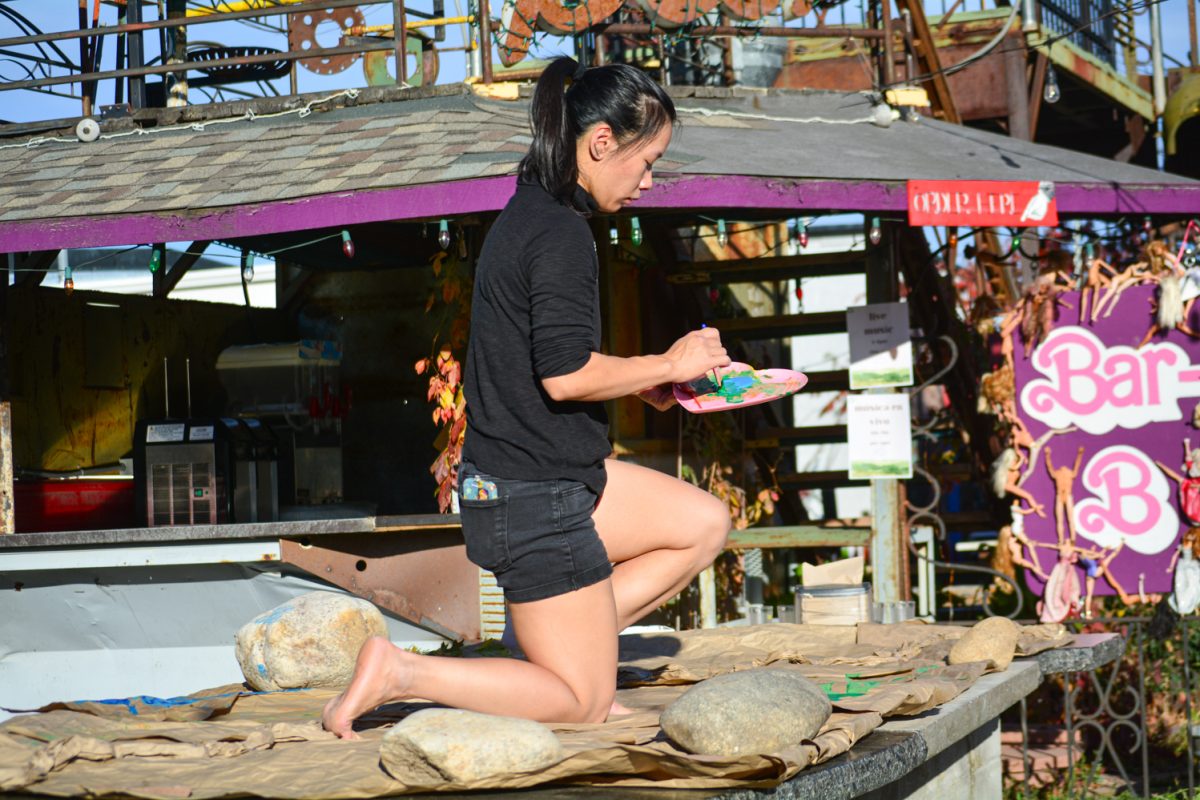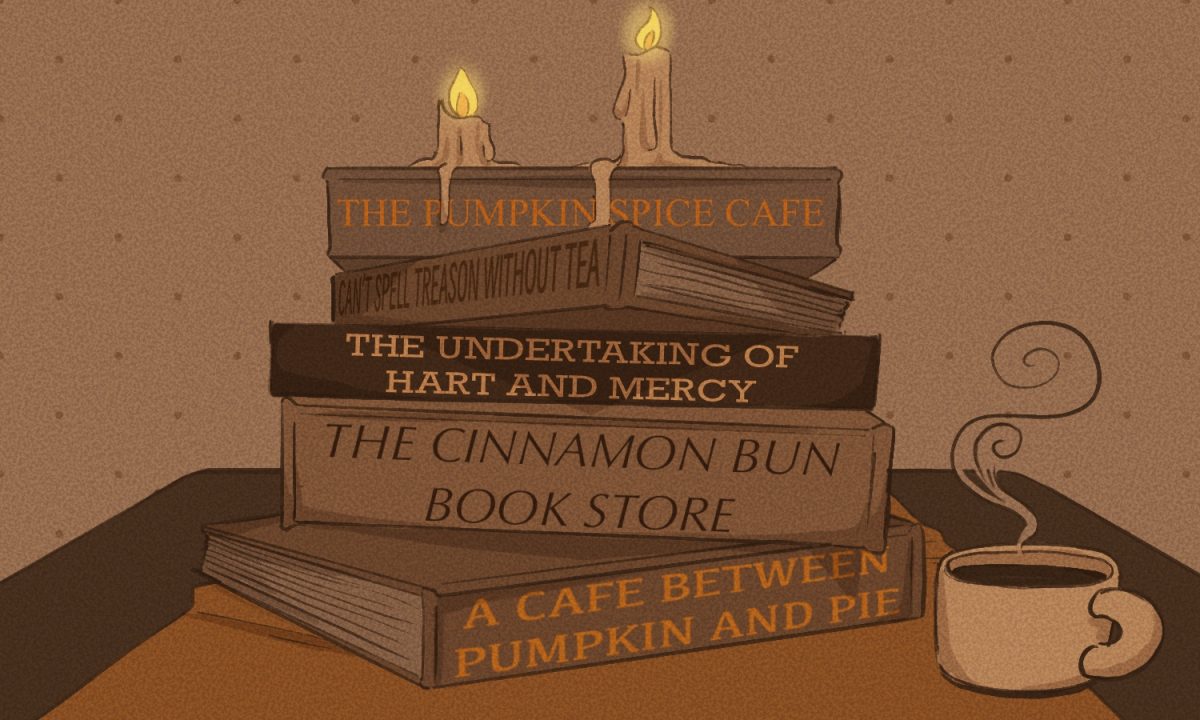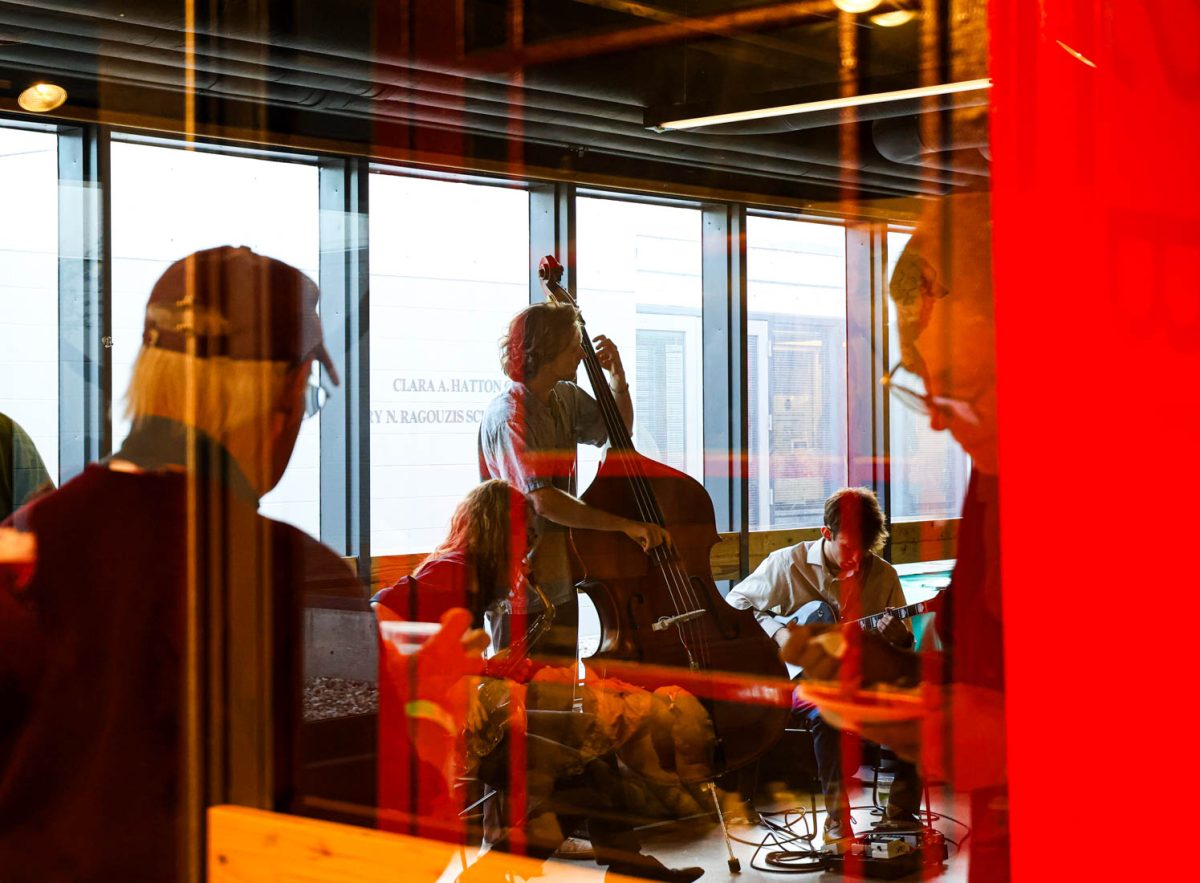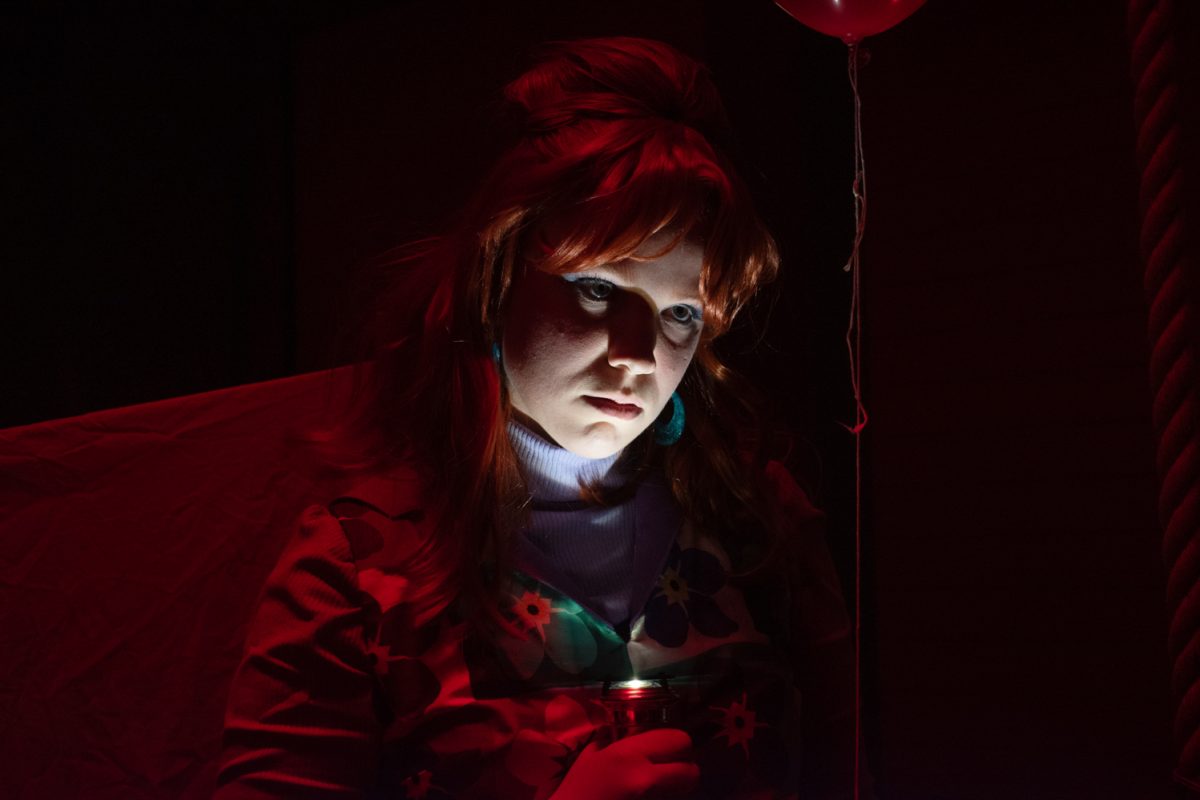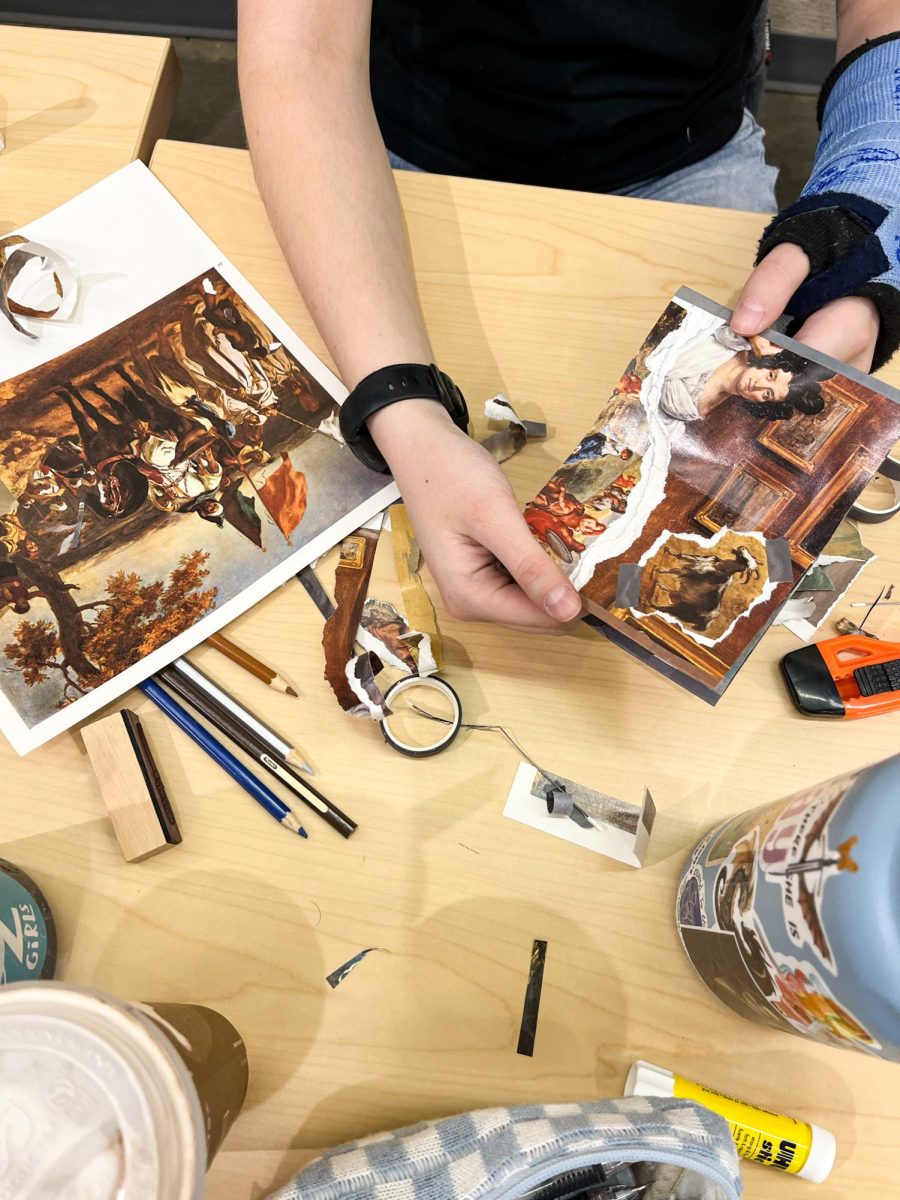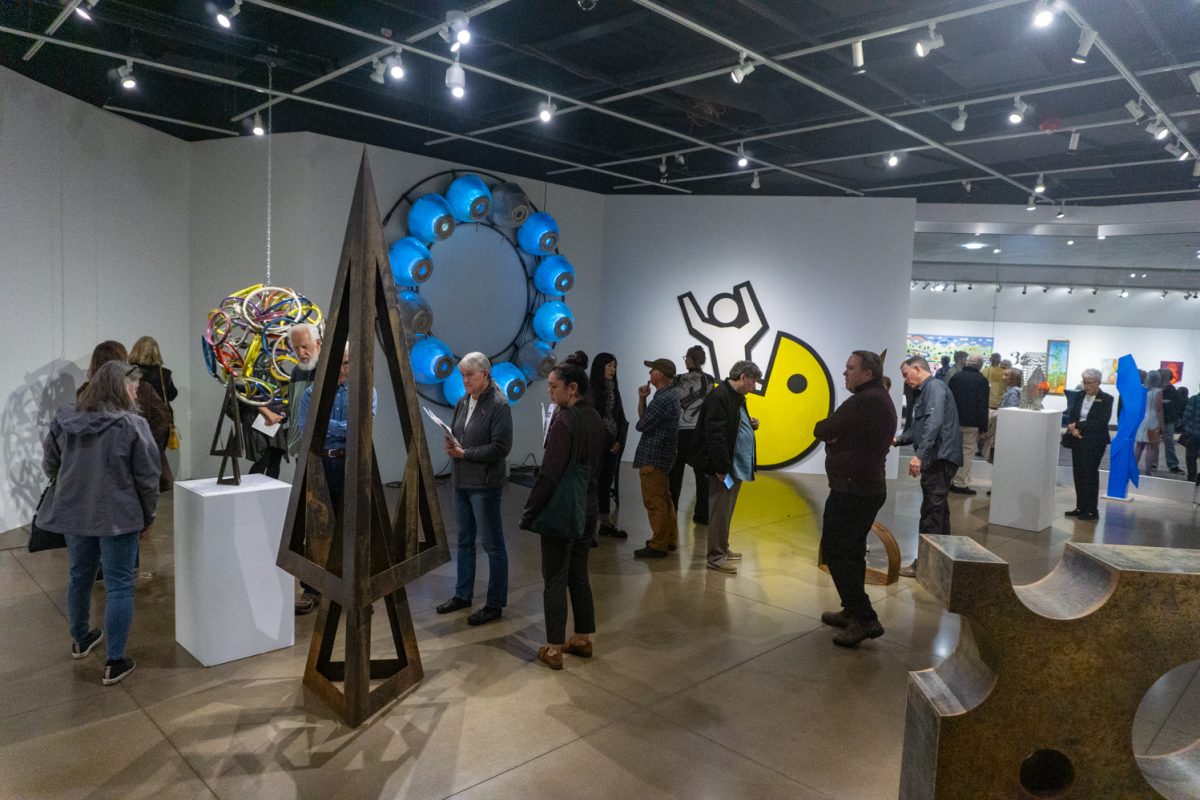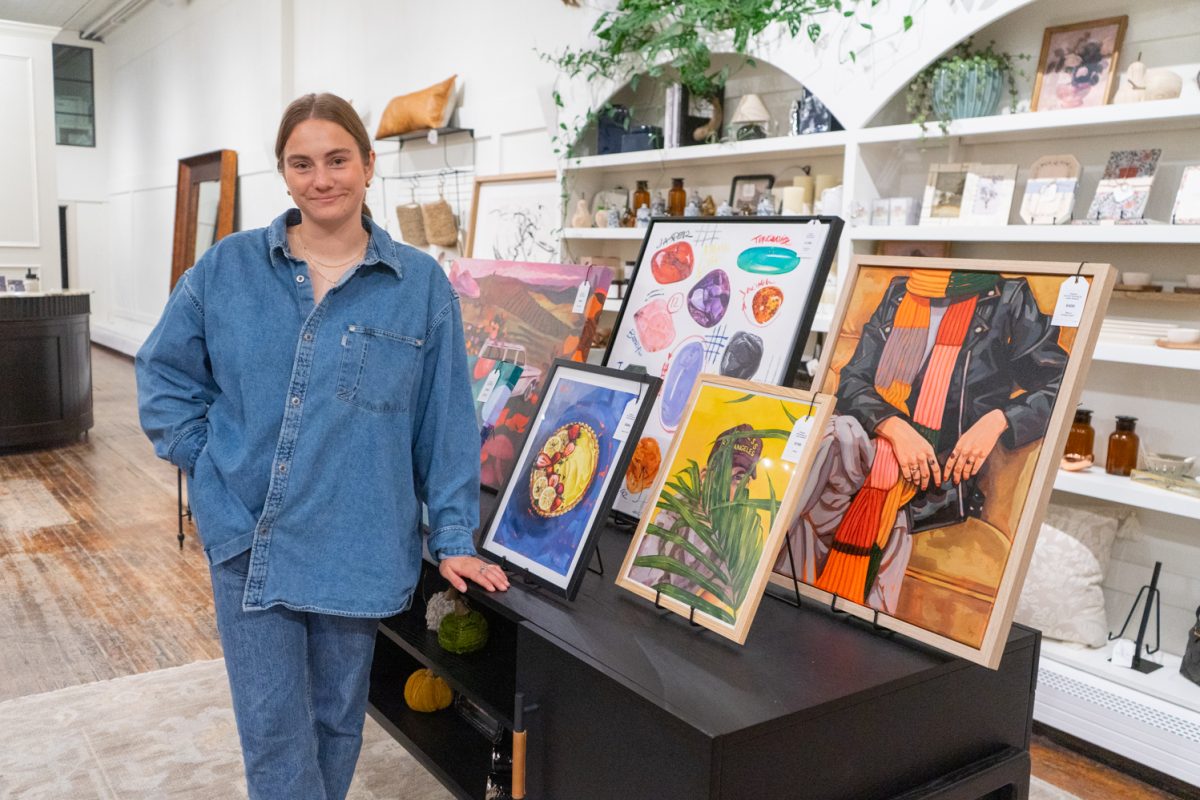The award-winning virtual reality immersive artwork, “The Hangman at Home,” has begun its display at the Hatton Gallery at Colorado State University. “The Hangman at Home” is an art piece that is immersive in its VR storytelling and haunting in its poetry. The exhibit is also reflective, as viewers experience the fourth wall breaking throughout the story.
Carl Sandburg’s 1922 poem, “The Hangman at Home,” reflects on the aftermath of World War I and the haunting nature of the hangman’s profession while suggesting the simplicity of a hangman’s domestic life.
Wife-and-husband duo Michelle and Uri Kranot took inspiration from Sandburg’s poem and composed a visual masterpiece. It won the 2020 Grand Jury Prize for Best VR Immersive Work at the Venice Film Festival as well as the 2021 Best XR Work at the Cannes Film Festival.
Throughout the VR experience, viewers choose from different points of entry to then be immersed in multiple different portals. Viewers get to watch intimate moments of domestic life relating to Sandburg’s poem.
For the audience, it does not feel inappropriate to simply observe. But as each story ends, the animations break the fourth wall and the characters direct their focus and gaze toward you as the viewer. By breaking the fourth wall, the artwork communicates an uneasy feeling that facilitates the haunting tones of the poem.
Allowing the CSU department of art and art history to showcase the virtual reality artwork inspired an unwavering creative and innovative group to then turn a masterful story into a cohesive conversation.
“Art is about inviting the viewer to connect emotionally, intellectually and psychologically. Art is something that has the ability to transport us to another place and space, and I think this piece does that through both physical and virtual worlds.” -Kim Ferrer, CSU instructor of foundations and artist
Xinran Yuan, a new addition to the CSU art faculty, is taking on a much-needed role: director of exhibitions and community engagement. Throughout Yuan’s creative career, she has taken an interest in art, science and the human experience, making her the ideal curator for this project.
Yuan introduced the piece to her colleagues, looking for authentic feedback and reactions. It was from this that Yuan inspired two of CSU’s esteemed art department members.
“Obviously, I was floored by the experience and thought it had merit as an installation,” said Nathan Seymour, a student engagement coordinator and studio technician at CSU. “It was so moving and introspective, causing so many reactions and emotions. I was excited for other colleagues to view the piece and offer feedback. Along with having been deeply impacted by the work, it was also jarring to remove the goggles, returning to a white, empty, unimaginative room. I felt that reaction took away from the art.”
Experiencing a beautiful, intense, immersive story conflicted with the vacant white walls and abrasive overhead lighting when removing the VR headset. While it took away from the VR experience for some viewers, it also left creative minds with a vision.
Kim Ferrer is an instructor within the art and art history department at CSU as well as an experienced and accomplished artist. When initially viewing “The Hangman at Home,” Ferrer wrote that she was “intrigued by the sense of shifting realities and not only being a spectator but also being seen.” She also found inspiration in adding elements that dynamically interacted with the virtual experience.
Working with Seymour, Yuan and a group of hand-selected students, Ferrer set out to create an installation that would not only reinforce the story being told but enhance it by adding new elements like insight and dialogue.
“The desperation and sense of hopelessness of that time period was haunting,” Ferrer wrote. “Much later, I realized my vision was an offering of hope, a safe place to reside, an invitation to look behind (or) beyond the veil.”
The installation was collaborative in every sense of the word, with students and faculty working together to give a creative platform to the highly acclaimed VR artwork. They shared ideas, reflected on ways to improve and always looked for ways to deepen the audience’s connection with “The Hangman at Home.”
Using cheesecloth and burlap, Ferrer and Seymour hung the fabrics to create four spaces for the audience to use the headsets and experience the VR. All the fabrics used were individually hand-processed in unique ways, allowing the remaining audience members who did not have the headsets to view those experiencing the VR art in real time.
“The cheesecloth and burlap have the ability to become a border (or) wall that contains a space while also letting us see through it, beyond it,” Ferrer wrote. “It has the ability to create a sense of another world that resides in or alongside our physical world.”
Everything about this exhibit was done carefully and thoughtfully, creating a space to inspire, comfort and prepare viewers for “The Hangman at Home” experience.
“I was walking around before and seeing everyone engage with the space while I can’t see what they’re seeing,” Maddie Christian said after she experienced the VR exhibit for the first time. “It was really interesting to see that before I actually did the VR.”
What started as a poem reflecting on the aftermath of World War I turned to utilizing a postconvergent art form to share imagery and art within the poem, which then turned to looking for ways to express comfort and safety alongside the experience. The unsettling story of “The Hangman at Home” not only evolves through art but also evolves through its meaning.
“Art is about inviting the viewer to connect emotionally, intellectually and psychologically,” Ferrer wrote. “Art is something that has the ability to transport us to another place and space, and I think this piece does that through both physical and virtual worlds.”
The exhibit is open until Feb. 14. Tickets are free to the public but must be reserved in advance.
Reach Ruby Secrest at entertainment@collegian.com or on Twitter @CSUCollegian.


